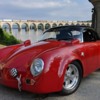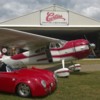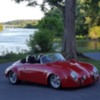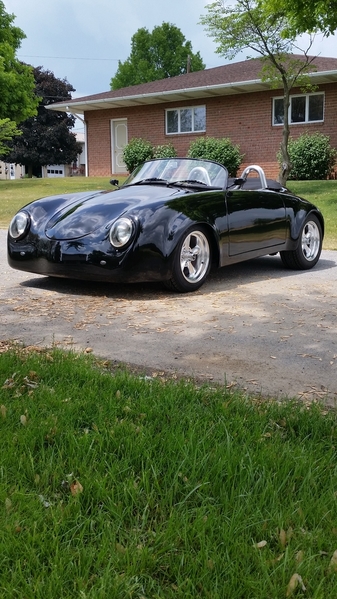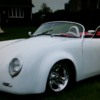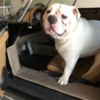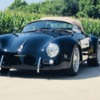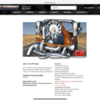Stock dual port heads will limit any engine's power to somewhere around 80-85 hp so in a 1915 there's no point in building it to rev much past 5,000 rpm. Anything more than an Engle W100 cam will take the engine past it's power peak, and revving it higher does nothing but wear out/break parts. For the budget minded, Ict's are a perfect fit here, although kadrons and 36 or 40 mm Webers or Dellortos will work really well too. If your only aircooled experience was a stock Beetle, an engine like this would be a blast to drive in a lightweight Speedster (especially with a 4.37 ring & pinion!). With electronic points and high energy spark, really no more maintenance than a stocker, and driven sanely most of the time it will get better mileage than that stocker.
Properly ported dual port heads (still with stock size 35x32 mm valves) will support 120 hp. On a smallish engine (anything with a stock stroke 69mm crankshaft is still considered small) with a cam/rocker combo that allows the engine to rev to 5500- 6,000 rpm and lift the valves up close to .500" (to take full advantage of the porting you paid for) and a little more carburation you'll get 110 -120 hp with great bottom end/ lower midrange power. The Ict's are now too small (they will only support 92-93 hp tops) and either kadrons or Webers/Dels are required. And you thought the engine was fun to drive before- this thing would be a hoot! (and still no more maintenance than normal) and might even get ever so slightly better mileage than the engine in the first paragraph (again, it all depends on how you drive it!).
Of course, everyone wants to be able to brag that their engine has 40x35 mm "big valve" heads, but now the engine has to rev above 5500- 6,000 rpm to make them even begin to work. 150, 160, even 170 hp is possible, but now the engine is set up to rev to 6500 or 7,000 rpm (or more), Webers or Dellortos are essential, it takes more maintenance to keep it running well and the car is really no longer in the "jump in any time and drive anywhere" category. And the bottom end/lower midrange (where we do most of our driving) isn't quite as nice as it was in the previous combo, which will show up in an ever so slight reduction in gas mileage.
To have that 150-160 or more hp, 5500 or 6,000 rpm redline, huge bottom end/lower midrange power and "jump in any time and drive anywhere" option- stroking the engine to 21, 22 or 2300 cc's will make it happen. 200 hp is even possible but now we're talking 42 or 44x 37 mm heads (even more expensive) and setting up the engine to run to 6500 or 7,000 rpm and lifting valves over .500". Read again the last line in the previous paragraph for the warning/cautionary notes.
Of course, each of these steps costs more money- how wide will you open your wallet?
Hope this helps. Al


